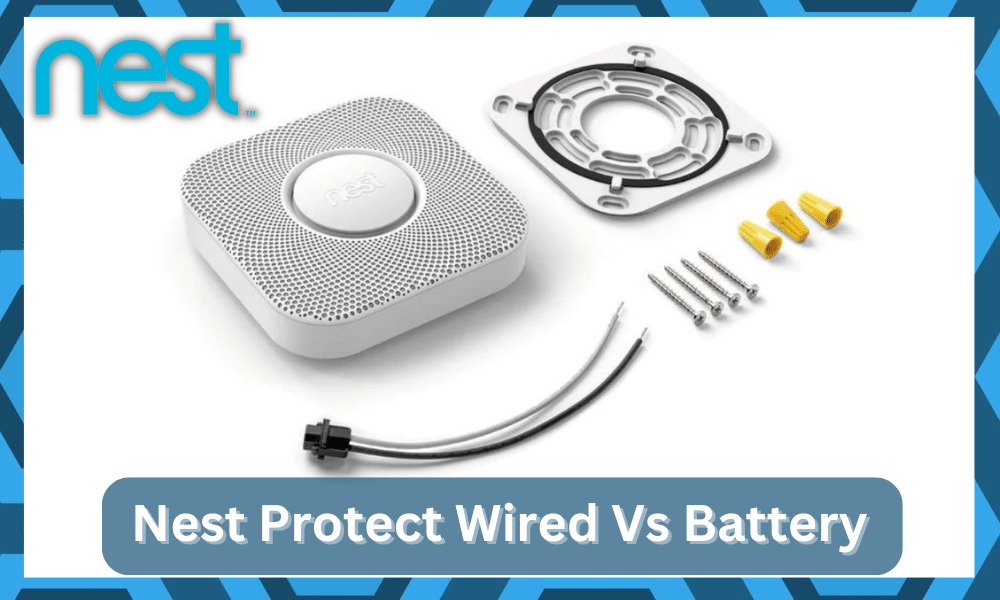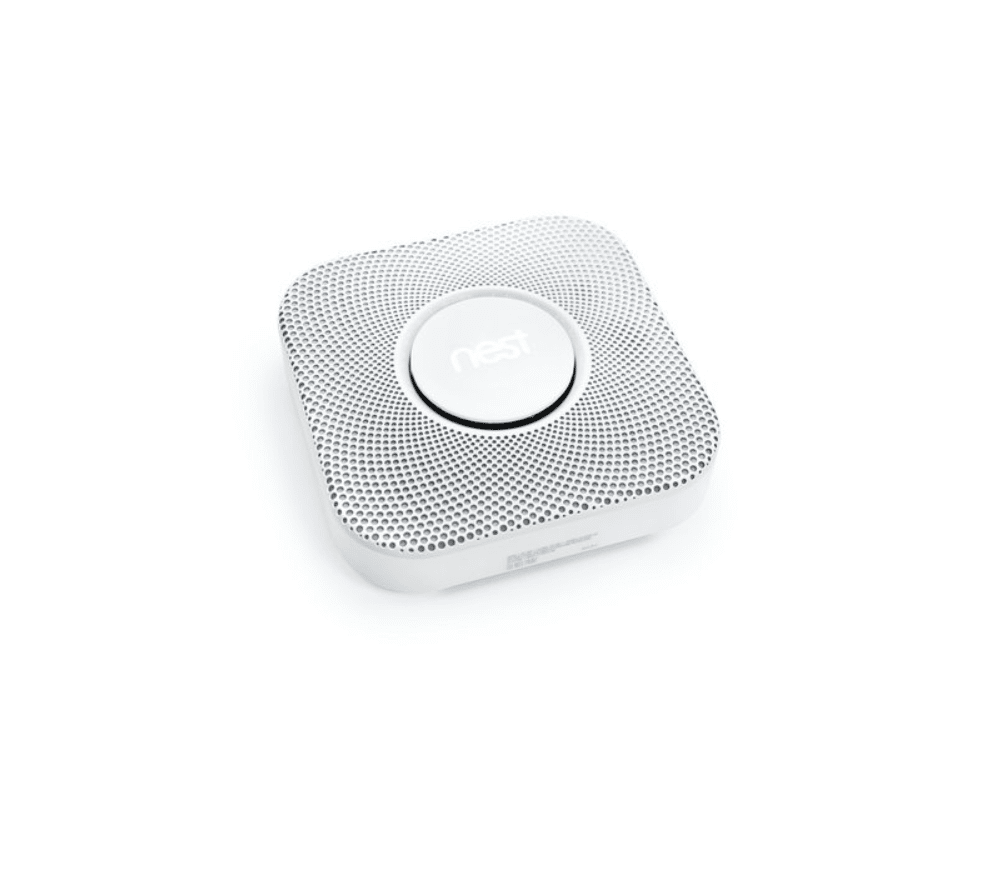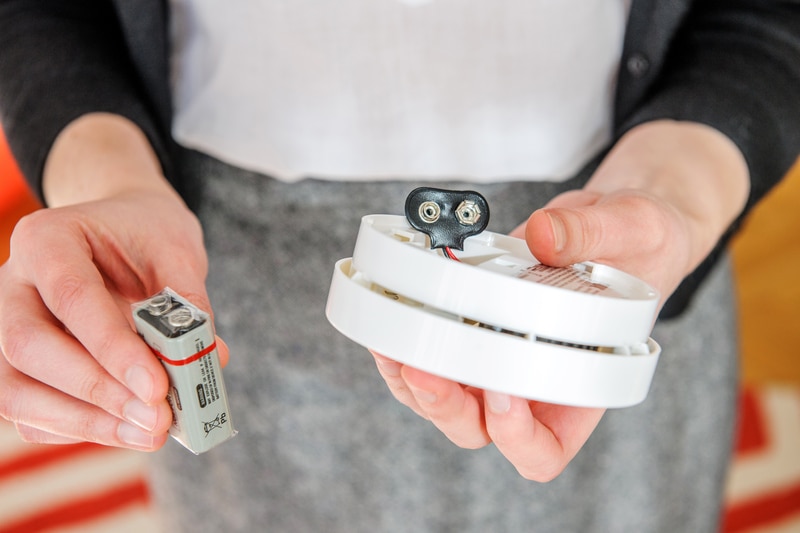
Nest Protect is an amazing home automation device designed by Google. Basically, it is a smoke and carbon monoxide detector.
Once it detects such a substance, a friendly voice speaks up to give you an early warning about smoke or CO (Carbon Monoxide) being in your house.
It is one of the must-have devices that you need in your smart system to complete the setup.
The pricing might not be that suitable for every owner, but you will thank yourself for this purchase in due time.
So, be sure to set aside the cash to include this unit in your smart system.
Nest Protect Wired Vs Battery
Being a smart product, you will get phone notifications if there’s something wrong in the house, even when you are away.
Apart from that, the device is also smart enough to tell you the exact source of the smoke or CO.
| Specifics | Nest Protect Battery | Nest Protect Wired |
| Power Status | 120-240 V Cable | 6 AA Batteries |
| Mount | Domestic Connection | No Cables |
| OS Compatibility | Android, iOS | Android, iOS |
| Auto-Away | Slow Response | Quick Alerts |
| Pathlight | Not Available | Available |
| Life Expectancy | 3-5 Years | 5-7 Years |
This amazing product by Google Nest comes in two variants. One of them is completely wired, while the other runs through a battery.
Similarly, both of these can be bought from the market at almost the same price. Some people prefer the wired version, while others go for the battery version.
If you’re also looking to buy the same product and wondering whether you should get Nest Protect Wired vs Battery, then there’s nothing to worry about.
We will be using this article to compare the differences between both. Although the difference is minimal, there’s still a slight difference between the two which is given below:
Auto-Away Interaction
The first major difference between the wired and battery variant of the Nest Protect is the way they interact in auto-away.
Here, the wired Nest Protect makes sure to phone home whenever they detect motion so your house can switch into or out of auto-away.
On the other hand, the battery version only phones home once a day. All the motion details are shared at that time with the Nest Thermostat so it can better learn your habits.
For this reason, you will find the majority of owners going with the wired version. You can’t expect the same responsiveness from the battery-powered system.
So, if you can’t let go of the auto-away interaction, going with a wired system will serve you far better.
Pathlight
Pathlight is a feature that comes with Nest Protect. Although the feature is present in both wired and battery versions of the Nest Protect, there is a slight difference between them.
You see, the wired version comes with an option that allows Pathlight to always be turned on in your house.
In contrast, there is no such option present in the battery version of the Nest Protect.
It is clear that the wired version comes with an additional feature. But in most cases, there’s barely any use for this additional feature.
LED Power Indicator
This is undoubtedly a minor difference and will most probably not affect anyone’s purchase.
However, we did mention that we will explore each and every difference between the two variants; hence here is another one.
The standard wired Nest Protect comes with an LED power indicator, whereas the battery version does not come with any LED power indicator.
Even if this does not make much of a difference, it is important you know them before going off to buy either one of them.
Life Expectancy
Probably the most important aspect of the two is life expectancy. It refers to the amount of time you should expect the device to last until it finally gives out.
A smart device should have plenty of durabilities so that you don’t have to upgrade quite often.
Ideally, a hard-wired Protect Nest with a backup battery should be the optimal choice for a better life expectancy.
But it will cost you quite a lot. Here is where the battery version of the Nest Protect comes in.
The device features 6 AA batteries, and Nest promises that it will give you multiple years before you need to change them.
What’s nice is that the Nest app will notify you six months before the battery runs out, so you have plenty of time.
Reliability
When you’re talking reliability, we will only recommend the wired version. There is no debate that the battery life on the battery-powered Nest Protect is pretty decent.
However, it can’t compete with the wired version in any dimension. So, stick with the wired unit to get the ideal performance.
Even if you’re dealing with frequent power cuts, the battery pack on the wired unit will provide the perfect backup to your unit.
So, keep that in mind if you’re worried about domestic connections. Furthermore, the quick response to and from the server for the wired system will add more value.
So, instead of looking at the price point, you should give more value to the reliability brought forward by this unit. No one wants an unreliable unit.
The difference in the prices is not that significant. It would be much better if you could wait a bit and go with the newer unit.
Convenience
Moving on to the initial installation of the device, you will enjoy a far better value while sticking with the battery-powered unit.
You won’t have to deal with any connection or mounting errors. Moreover, some owners with a wired unit have to hire an electrician to help with the installation.
So, if you’re looking to avoid this hassle, then going with the battery-powered unit is not a bad idea.
It all comes down to your plans with the unit, and if you’re looking for installation, then the battery-powered unit will take the lead.
Other than that, there is nothing good to say about the battery-powered system. So, keep in mind that you will be giving up on a lot of features while going with this option.
Verdict
Comparing Nest Protect Wired vs Battery, there are really minor differences to seriously even say one is better than the other.
The wired does come with some slightly added features and will support a backup battery, but it will cost you more.
This is why we suggest you go with whatever you think suits you the best here. You won’t really be making a mistake by choosing either one of the two.
To help you with your decision, we have already listed all the known differences between the wired and battery version.
However, if you’re still not too sure about the final purchase decision, try seeking help from the dealer.
You can also reach out to the local contractors, and they will help you find the perfect fit. Seeking help from the professional will help you figure out the right fit for your home.
Moreover, the experts present on the online community forums are always willing to help confused individuals.
So, if you’re new to the smart home market, try contacting these experts.
It won’t take more than an hour to secure a response, and you can go back and forth with the details.
Hopefully, you will be able to find a device that will fit your needs perfectly. If you’re not dealing with any budget issues, then going with the wired unit is mostly the better option.
On the other hand, if you’re looking for easy installation, then the battery powered unit is the choice.
So, either flip a coin or go through all of these specifics to find the perfect option. It all comes down to what you prioritize more, the reliability or the convenience of the initial installation.
Choosing between these two pointers will help you go with either the wired or the battery powered system.



